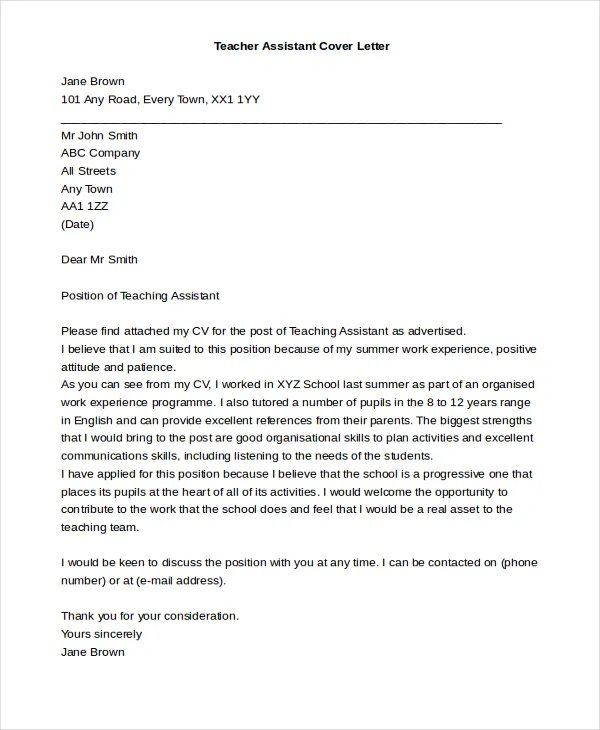Why a Strong Cover Letter Matters for Teaching Assistants
In the competitive landscape of academic job applications, a compelling cover letter can be your most significant asset. It serves as your first impression, going beyond the basic facts presented in your resume to showcase your personality, enthusiasm, and how your unique skill set aligns perfectly with the role you’re seeking. A strong cover letter allows you to weave a narrative, explaining why you are not just qualified, but the ideal fit for the specific teaching assistant position. It’s an opportunity to expand on your experiences, providing context and demonstrating your genuine interest in contributing to the educational environment. In many instances, a well-written cover letter is the determining factor between your application receiving careful consideration or being overlooked.
Understanding the Cover Letter Basics
The foundation of any effective cover letter lies in understanding its purpose: to introduce yourself and highlight your qualifications in a concise, professional format. Typically, a one-page document is ideal. Your cover letter should be well-written, free of errors, and, most importantly, tailored to the specific job description. This personalization demonstrates to the hiring committee that you’ve invested the necessary time to understand the position’s requirements and hold a genuine interest. Maintaining a professional tone and adhering to proper formatting further enhance your credibility and attention to detail. Remember, this is your opportunity to make a strong first impression (cover-letter-template-5.webp).
Key Components of a Teaching Assistant Cover Letter
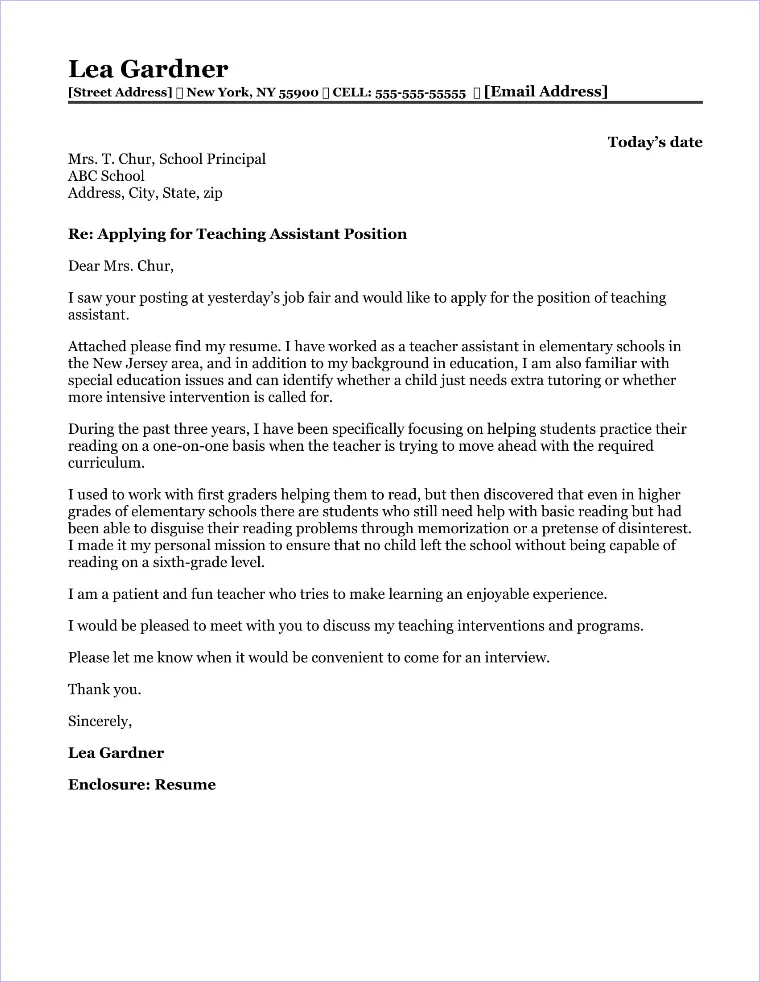
Contact Information and Date
Begin at the top of your cover letter with your full contact information: your name, phone number, professional email address, and, if applicable, your LinkedIn profile URL. Immediately below this, include the date you are submitting your application. This ensures the hiring manager can easily reach you and provides a clean, professional start to your document. This section sets the tone for the rest of your letter and makes it easy for the reader to contact you (cover-letter-teaching-assistant-1.webp).
Addressing the Hiring Manager
Whenever possible, address your cover letter to a specific person. Research the department or institution to find the hiring manager’s name; a brief phone call to the department or a quick review of the university’s website can often yield this information. Addressing the letter to a person shows that you’ve done your homework and demonstrates your attention to detail. If you are unable to identify a specific name, use a professional salutation such as “Dear Hiring Committee” or “Dear [Department Name] Hiring Manager.” Avoid generic greetings like “To Whom It May Concern,” as they can make your letter seem impersonal.
Opening Paragraph
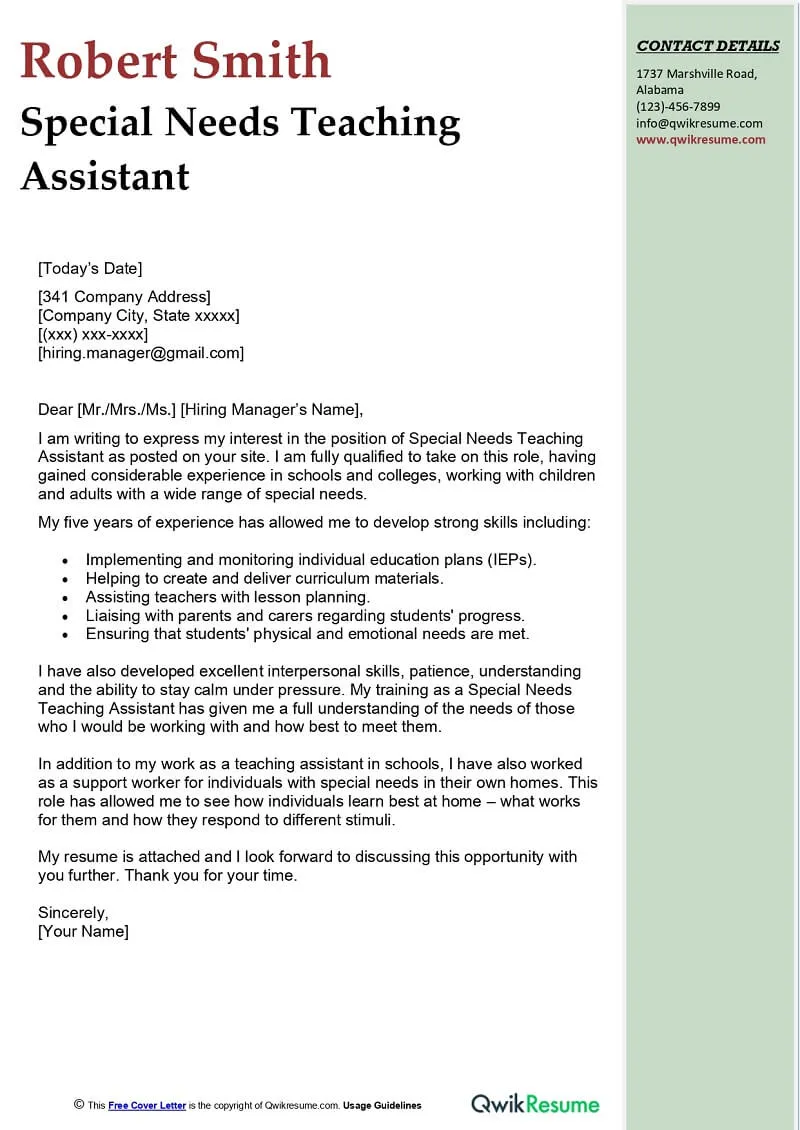
The opening paragraph is your first, and often most critical, opportunity to grab the reader’s attention. Start by clearly stating the position you’re applying for and where you found the job posting. Immediately express your enthusiasm for the role and the institution. Briefly mention why you’re interested in the position, highlighting a key skill or experience that aligns with the job requirements. This opening should be concise, engaging, and set a positive tone for the rest of the letter, encouraging the reader to continue (teaching-assistant-skills-2.webp).
Highlighting Your Relevant Skills and Experience
This section is the core of your cover letter; it’s where you demonstrate your qualifications. Focus on the skills and experiences most relevant to the teaching assistant role. Use specific examples to illustrate your abilities; instead of stating you have excellent communication skills, describe a time you successfully explained a complex concept to students. Whenever possible, quantify your achievements; for example, mention the number of students you’ve assisted or the percentage increase in understanding resulting from your tutoring efforts.
Academic Qualifications
Clearly state your academic qualifications, including your degree, major, and any relevant coursework. If your GPA is above average, or if the job description requests it, include it. Highlight any academic achievements, such as Dean’s List honors or scholarships. If you’re currently engaged in research or working on a thesis, briefly mention its topic and its relevance to the teaching assistant role. This underscores your academic background and commitment to scholarly pursuits.
Teaching Experience
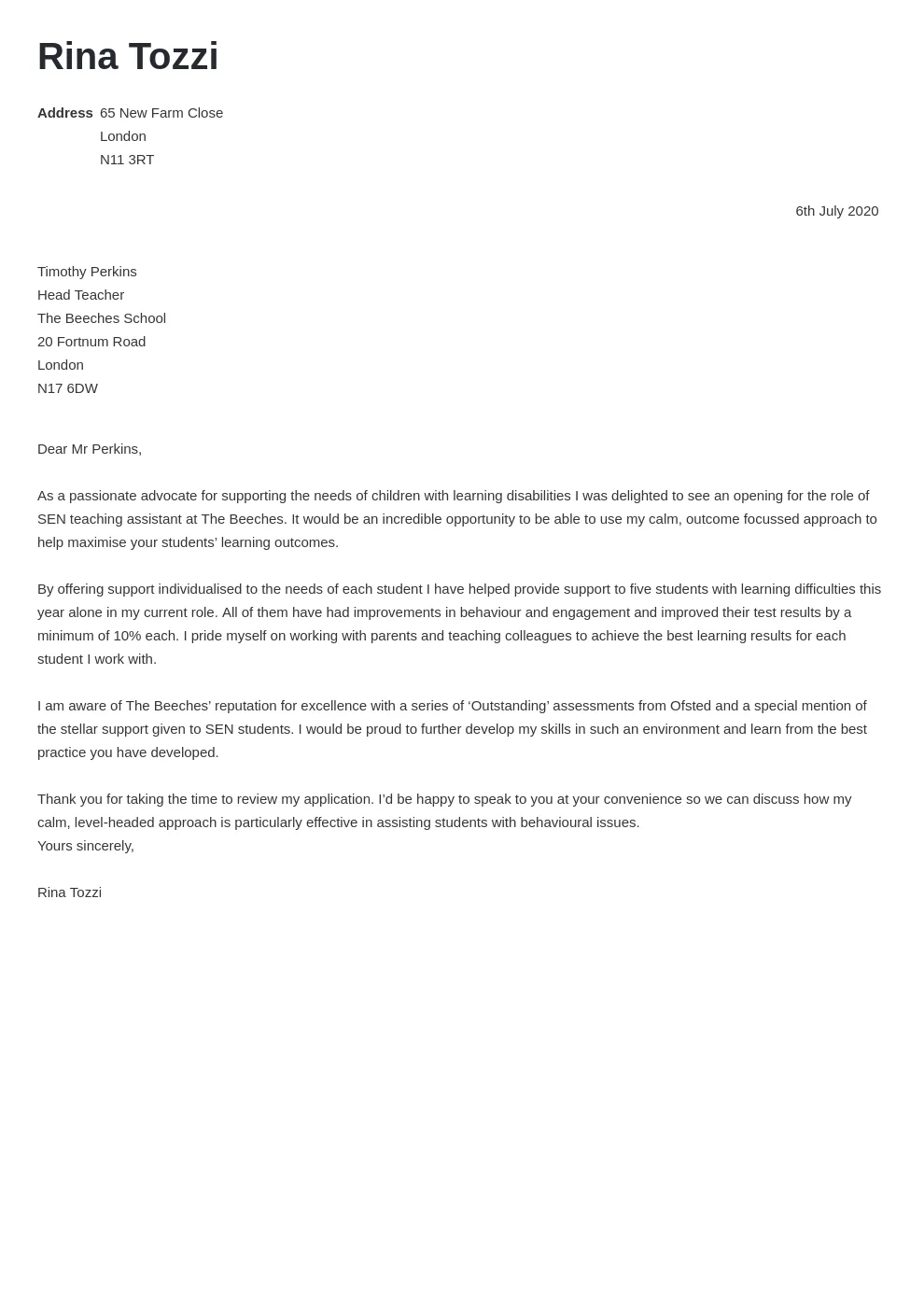
Detail any prior teaching experience, regardless of its scale. This might include tutoring, mentoring, leading study groups, or assisting a professor. Describe your responsibilities and the skills you used; focus on experiences that demonstrate your ability to explain concepts, provide feedback, and create a positive learning environment. Quantify your contributions whenever possible, such as the number of students you’ve worked with or improvements in their performance. It is important to indicate your role and the impact you made.
Communication and Interpersonal Skills
Teaching assistants require strong communication and interpersonal skills. Highlight your ability to communicate effectively, both verbally and in writing. Provide examples of your ability to explain complex topics clearly, actively listen to student concerns, and offer constructive feedback. Demonstrate your ability to work collaboratively with both students and faculty, and mention any experiences where you mediated conflicts, motivated students, or fostered a positive, inclusive learning environment (teaching-assistant-example-8.webp).
Tailoring Your Cover Letter
Customization is key. Tailor each cover letter to the specific job and institution. Carefully review the job description, identifying the key skills and qualifications the employer is seeking. Use the job description as a guide, structuring your letter to address the employer’s specific needs. If the description emphasizes specific software or teaching methods, be sure to mention your experience with them. Research the institution, demonstrating your understanding of its values and mission. Tailoring your letter proves you’ve taken the time to understand the role and are genuinely interested in the opportunity.
Closing Paragraph
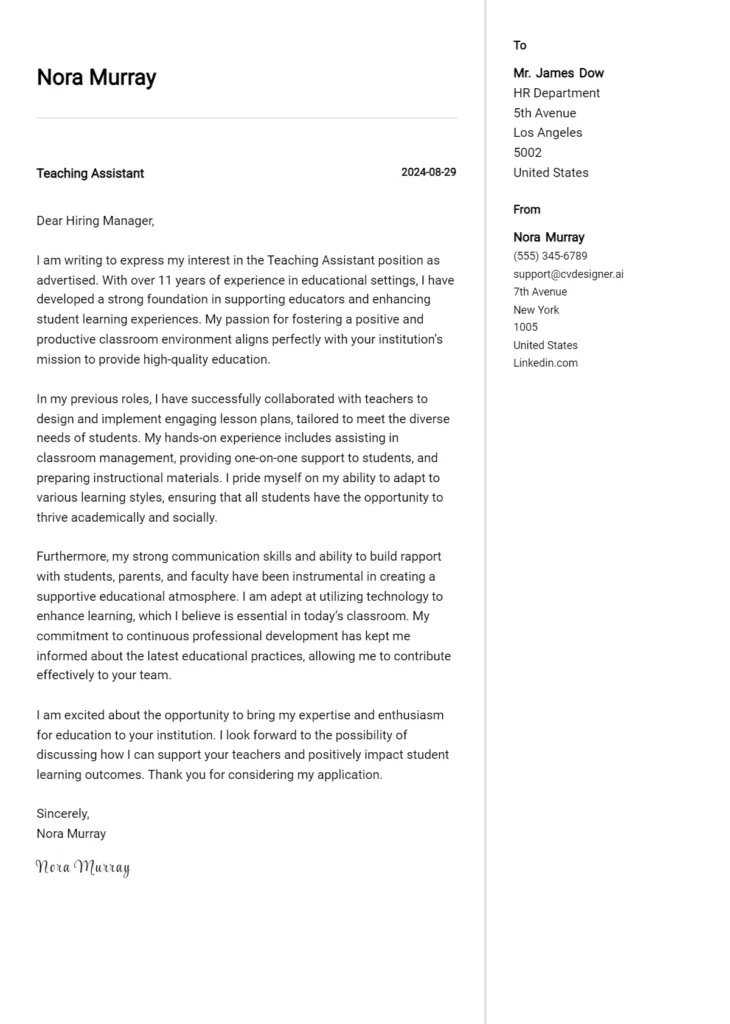
In your closing paragraph, reiterate your interest in the position and the institution. Express your enthusiasm for the opportunity to contribute to the academic environment. Thank the hiring manager for their time and consideration. Include a call to action, stating your availability for an interview and how they can contact you. Keep your closing concise and professional, leaving a lasting positive impression.
Formatting and Proofreading Tips
Formatting is essential for readability. Use a professional font like Times New Roman, Arial, or Calibri, with a font size of 11 or 12 points. Use single-spacing within paragraphs and double-spacing between paragraphs. Keep your letter to one page. Proofread your cover letter meticulously, checking for typos, grammatical errors, and inconsistencies. Read your letter aloud to catch any awkward phrasing. Consider asking a friend, family member, or career counselor to review your cover letter for feedback. A well-formatted and error-free cover letter demonstrates professionalism and attention to detail (cover-letter-formatting-3.webp; proofreading-cover-letter-6.webp).
Cover Letter Examples for Inspiration
Reviewing cover letter samples is an excellent way to gain insights and guidance. Look for examples tailored to teaching assistant positions in your field. Analyze the structure, language, and content to get ideas for your own cover letter. Pay close attention to how the applicants highlight their skills and experiences. While you should adapt the examples to your unique qualifications, avoid copying them verbatim. Use the examples as a starting point and customize your letter to reflect your own experiences and personality.
Sample Cover Letter 1
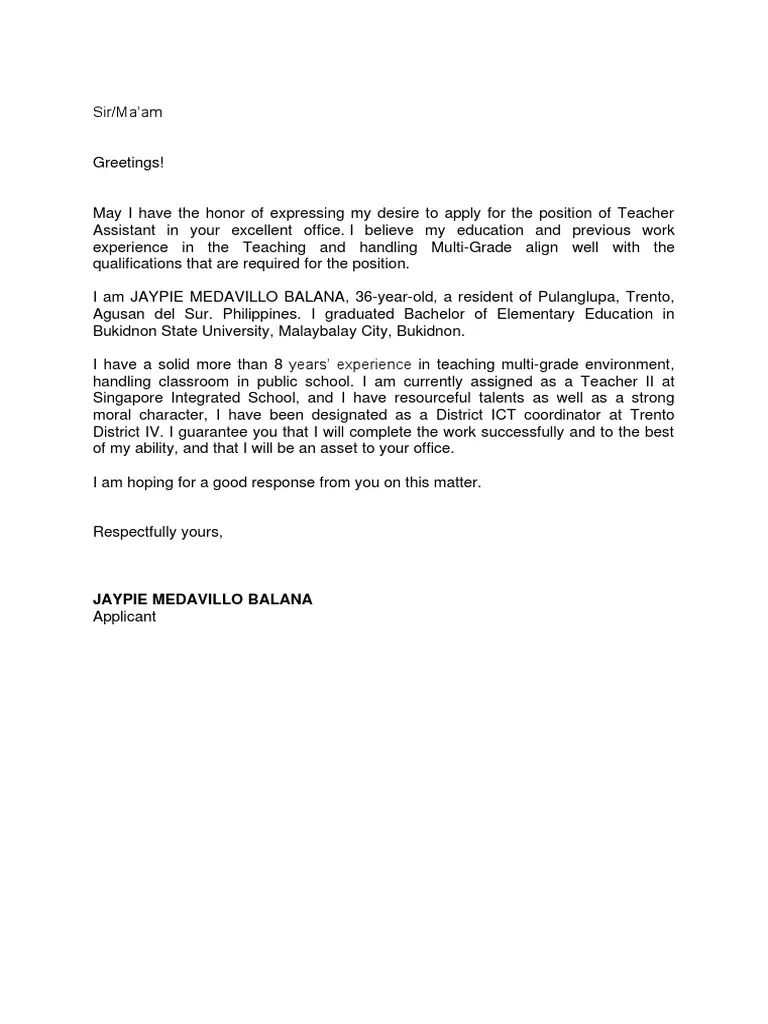
[Insert a sample cover letter here tailored to a specific discipline (e.g., Biology, focusing on lab techniques and student mentoring), highlighting the key elements discussed. It should address the hiring manager, highlight relevant skills (lab experience, communication), and express enthusiasm. (approximately 200-250 words)]
Sample Cover Letter 2
[Include a second sample, showcasing a different approach, such as focusing on online teaching experience or grading, or a different area of study (e.g. History). This example should highlight a different set of qualifications, emphasizing organizational skills and providing feedback. (approximately 200-250 words)]
Common Mistakes to Avoid
Ignoring the Job Description
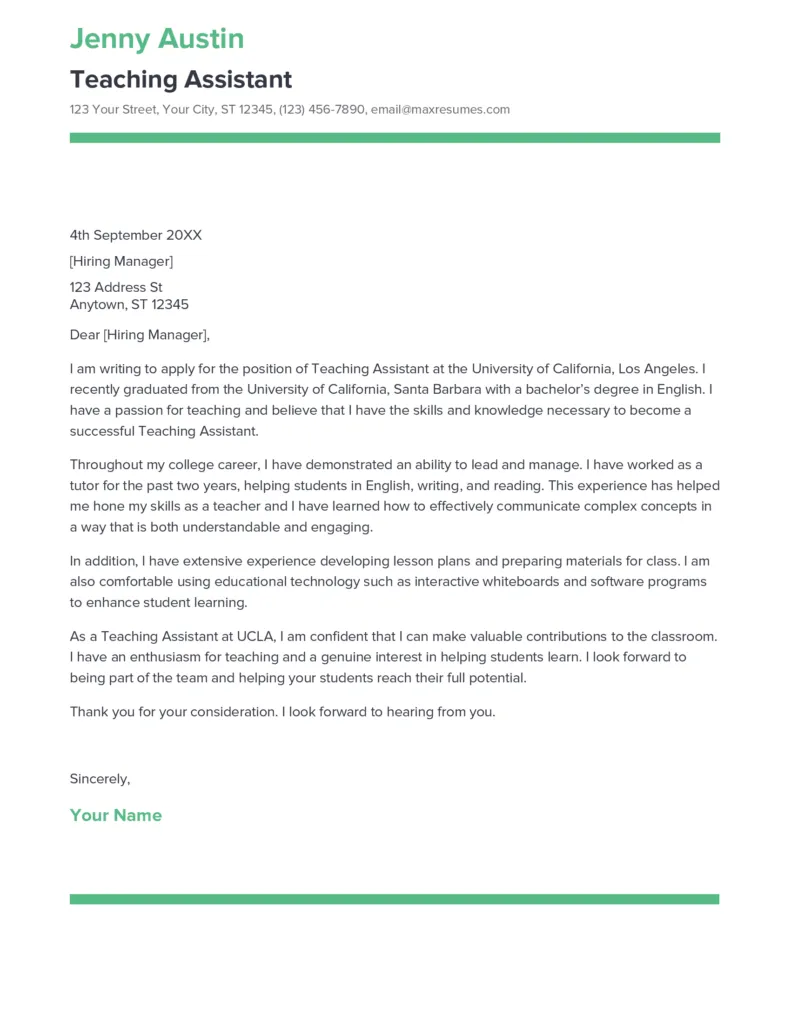
One of the most significant mistakes is failing to tailor your cover letter to the specific job description. This shows a lack of attention to detail and a lack of genuine interest in the role. Always carefully review the job requirements and tailor your cover letter to address the employer’s specific needs. Highlight the skills and experiences that align with the job requirements. Mentioning specific skills or experiences listed in the job description demonstrates your understanding of the role and your ability to meet its demands. Avoid using a generic cover letter and customize your message for each position (cover-letter-mistakes-4.webp).
Using Generic Language
Avoid using generic language that could apply to any candidate. Instead, use specific examples and quantifiable achievements to demonstrate your skills. Instead of saying you are a good communicator, describe a situation where you effectively communicated complex ideas. Avoid clichés and buzzwords that don’t convey any real information about your skills. Use action verbs to start your sentences and to make your letter more dynamic and engaging. Show, don’t just tell, the hiring manager what you are capable of.
Typos and Grammatical Errors
Typos and grammatical errors can make your cover letter appear unprofessional and undermine your credibility. Proofread your cover letter meticulously for any errors. Read your letter aloud to catch awkward phrasing or sentences that don’t make sense. Ask a friend, family member, or career counselor to review your letter for feedback. A polished and error-free cover letter demonstrates your attention to detail and commitment to quality, and it significantly increases your chances of being considered.
How to Follow Up
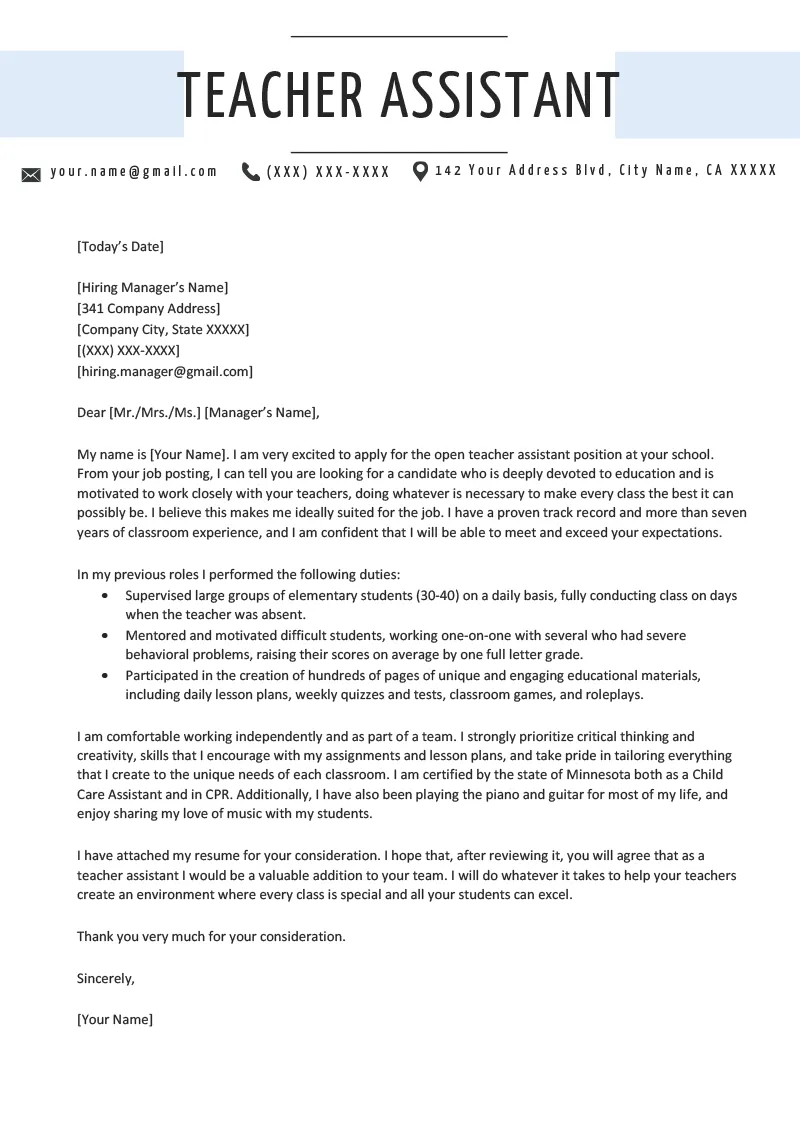
After submitting your cover letter and resume, follow up with the hiring manager to express your continued interest in the position. Send a brief email one to two weeks after submitting your application. Reiterate your interest in the role and reiterate your qualifications. Thank the hiring manager for their time and consideration. Inquire about the timeline for making a hiring decision. Following up demonstrates your enthusiasm and initiative, which can set you apart from other applicants. Be polite, professional, and concise in your follow-up communication (follow-up-cover-letter-7.webp).
